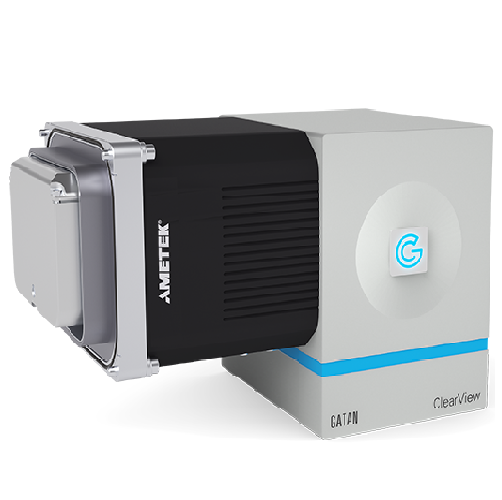Digital Imaging Cameras

ClearView Camera
The high-performance scintillator camera that elevates your everyday transmission electron microscopy
ADVANTAGES
Introducing ClearView®, the high-performance scintillator camera that elevates your everyday transmission electron microscopy (TEM). With ClearView, everyone can capture impactful in-situ and 4D STEM data at framerates faster than any other scintillator camera on the market. New camera imaging modes make it easy to capture the highest-quality images from materials science and biological samples.
- Capture images with the highest quality: New CMOS sensor features always-on high dynamic range sensor readouts to acquire 4k x 4k images and video at 50 frames per second (fps)
- Record in-situ video and 4D STEM data at the highest speeds of any scintillator camera: Acquire data up to 1,600 fps at 256 x 256 resolution to record fast in-situ reactions or analyze large areas quickly with 4D STEM
- Maximize signal-to-noise for low-contrast imaging and diffraction: New enhanced frame exposure imaging mode integrates less read noise to better resolve subtle image and diffraction features under low-dose conditions
- Achieve the desired frame rate and data rate for any technique or experiment: Control image size and field of view with new sensor subarea region of interest readout options
- Integrates with eaSI technology for the most efficient multidimensional and multimodal experiments: Acquires 4D STEM data linked with elemental data from complimentary detectors
In-situ option
- Image binning increases framerate by 4x, and sensor sub-area readouts increase framerate by up to 8x
- Combine binning with sub-area readout to reach up to 1,600 fps and study sub-ms in-situ reactions
- Never miss the start of a reaction with LookBack™, a post-event triggered video buffer to ensure events are captured from the start
- Confidently record long experiments with TimeLapse, which saves data at a longer interval of time or number of frames
- Process data from start to finish in DigitalMicrograph® using tools for drift correction, video editing, and data exporting
Low distortion option
- Guarantees high-resolution, low-distortion images for quantitative spatial measurements on your TEM
- Improved fiber-optic coupling and imaging performance minimize camera distortions
- Low camera distortion offers a greater margin to achieve total distortion specification for regular TEM qualification
